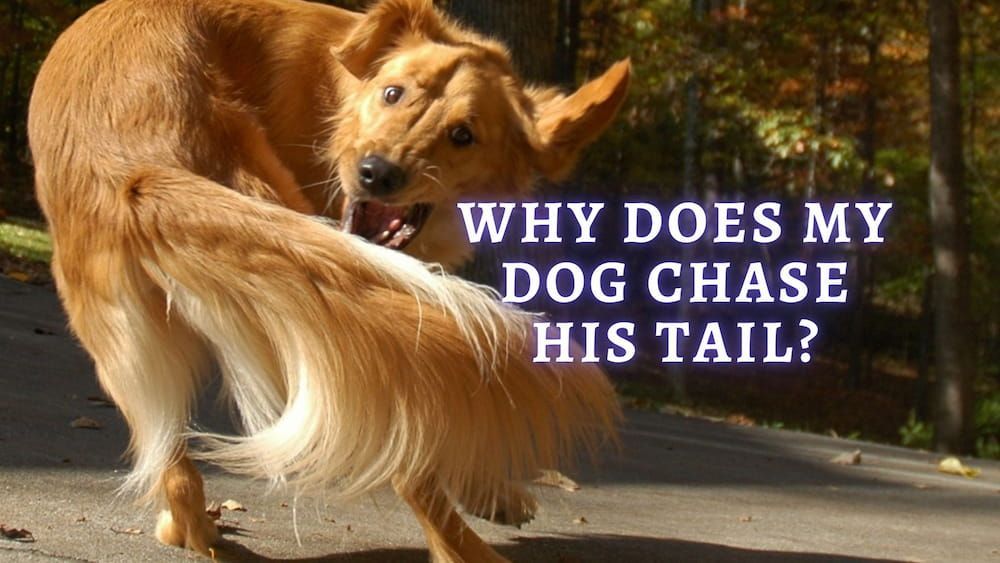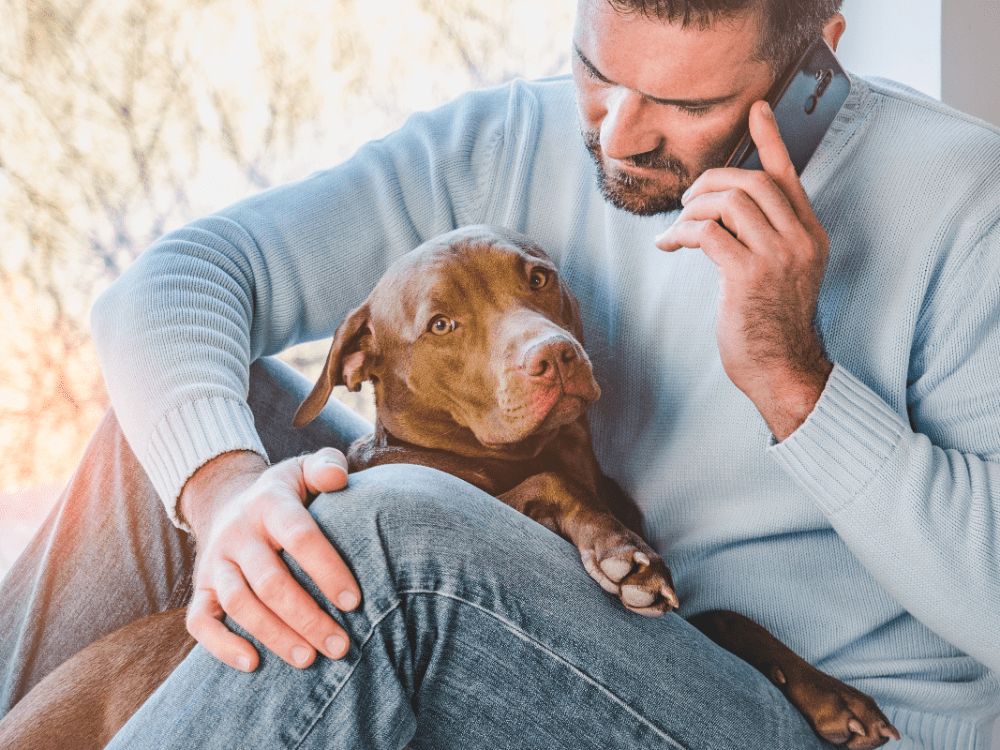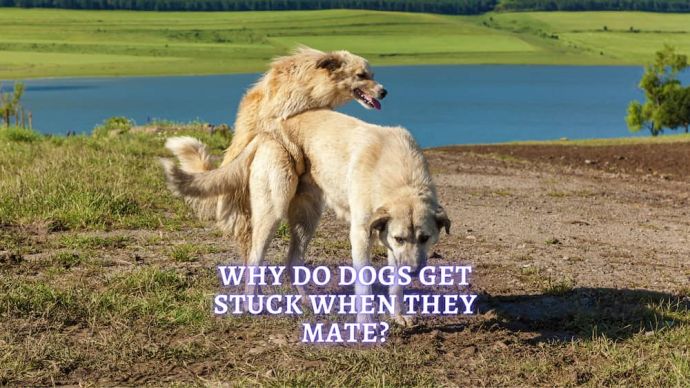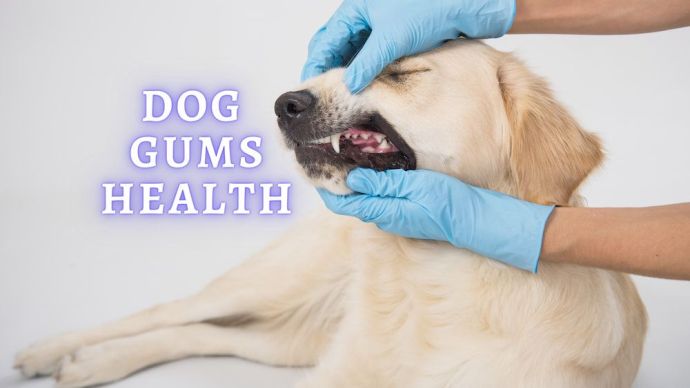Why Does My Dog Chase His Tail: Reasons and Solutions
Written by:
Author: Dr. Sara Ochoa
Dr. Sara Redding Ochoa is a veterinarian with many years of experience and higher education. During her time in veterinary school she was able to learn form some of the most well-known veterinarians from all over the world. Sara lives happily with her husband Greg and her babies Ruby the schnoodle, and Bam-Bam her bunny. Dr. Sara Redding Ochoa has a passion and love for animals that makes her a wonderful asset to our team.
View all 13 articlesLearn about our editorial process and veterinary review board.
Viewed: 1505
Updated on: 07/27/2022
One of the most interesting observable behaviors that many dogs show is the idea of chasing their tails. However, there are some reasons why your favorite four-legged pet is choosing to chase its tail.
Why do Dogs chase their Tails?
Chasing a tail can come down to a few different reasons. Dogs can often start to partake in this type of behavior when they feel a few ways.
Here are some of the main reasons that pets start chasing their tails:
1. Boredom
Your dog may begin to pursue their tail if they are starting to feel bored. When pets spend too much time staring at the same four walls or even laying on the couch, they begin to get bored. Dogs will start to find new ways to amuse themselves and get rid of some of their pent-up energy. Regular chasing could be a sign that your animal isn’t getting enough engagement or enough exercise.
2. Age
Older dogs will actually start to chew their tails due to decreased awareness. It can be a comforting feeling, and as an older pet begins to chew their tail, this can show that they are seeking comfort or attempting to take their mind off something else.
Young puppies will often start tail chasing as a means of awareness. Many copies find it challenging to remember that their tail is following up, and catching a glimpse of their tail behind them can be all it takes for them to consider pulling back and giving it a good bite.
3. Seeking attention
When you start to reinforce tail chasing as positive behavior, it’s not too surprising when your dog will begin to perform this behavior as a means to get a treat. If you notice when your family friend starts to chase, there is a good chance that they will keep chasing their tail to capture your attention so that you play with them more often.
Dogs can respond to negative and positive attention, so if you choose to school at your pooch when they are chasing it too much, this could leave to a different type of reinforcement or start seeking negative behaviors to take up the space of chasing.
4. Medical reasons
If your dog starts to chase the tail or even bite it, this could also be a sign of other discomforts such as underlying medical conditions. They will often continue to chew at an irritated or painful area. If your pup has their tail caught in a door or another problem, they could continue to chew and chase the tail to suit their injury.
Parasites
Dogs will also chase their tails when they are infested with parasites like intestinal parasites. It is a behavior that can help to move tapeworms and make them migrate out of the rectum. Your pup can have microscopic parasites that you cannot see. If you think that your dog has a parasite, it would be best for your vet to check a fecal sample for any worms.
Fleas and ticks
Fleas and ticks can also lead to this behavior, as this is an indication that your family friend is itchy or irritated. Treating the area with cream or seeing a vet is important if you think tail chasing is related to a medical issue.
Mites
Certain mites can cause your dog to be very itchy. If your pooch is trying to itch their back end, they may run in a circle chasing their tail, trying to reach this spot. Common mites seen in canines are Demodex and Sarcoptic Mange. Depending on where you live, your dog also could even have lice.
Food Allergies
If your dog is allergic to one of the ingredients in their diet, they will have a raw and irritated rectum. Your pet may be chasing their tail as a way to reach this area to chew it. Food allergies [1] can cause your pup to have ear infections and irritation around your dog’s rectum.
Skin allergies
Skin allergies are another reason that your dog may be chasing their tail. Many times, with skin allergies, you will see flaky areas on your pup’s body. This will cause your pooch to itch and scratch and may even develop a secondary infection that will need to be treated.
Vestibular disease
Your pooch may not be chasing their tail but have a vestibular disease. [2] The vestibular disease causes your dog to walk in circles and they may appear that they are chasing their tail. This can be caused by many different things. In puppies, it is usually due to an inner ear infection. In older canines, it is usually caused by a brain tumor.
5. Compulsive behaviors
Compulsive behaviors also present a chance that your dog will perform tail chasing. Also, according to the World Dog Finder, it needs to remember that it is not always a sign of happiness. Some canines can suffer from an obsessive-compulsive disorder, just like humans. This behavior can manifest those items if your pup suffers from separation anxiety or another form of the disorder.
Regardless of the factor that initiates the chase, dogs that continue to chase tails compulsively may be doing it due to some type of trauma.
Do Dogs get dizzy from Chasing their Tails?
Dog’s do not tend to get as dizzy as humans, but they can experience the same symptoms. They have a much better sense of balance, but signs like walking in circles, vomiting, or eyes flickering from side to side suggest that your pooch has gotten dizzy.
Most pets can control their balance and react far better than humans when they spin around. It’s also essential to spot the signs of changes in the vestibular system that can cause a family friend to resort to spinning behavior more often.
When dogs have their inner ear affected, this can lead to more tail-chasing behavior because they will be regularly affected by their dizziness. Pets can get sick or even vomit as a result of their constant spinning.
Yeast and bacteria can regularly grow in a dog’s ears, leading to damage to the vestibular system. If you are worried that your pooch may have a problem with circling, it’s essential to speak to a veterinarian as soon as possible. Circling can continue to cause a series of behavioral problems as your pet ages. Managing issues with the inner ear and keeping your dogs here clean will help prevent this dizziness.
How do you Stop a dog from chasing its Tail?
If you would like to discourage behaviors that cause your family friend to chase their tail, there are some ways that you can proceed:
1. Go to the vet
If you suspect that the chasing can have something to do with an underlying medical problem, it’s essential to rule out this reason before proceeding with the behavior correction. Behavioral training will not be valid if the chasing behavior is due to an untreated medical condition. Bringing your pet into a veterinarian’s office to diagnose a medical issue associated with tail chasing behavior is essential.
2. Distraction
As soon as your dog starts to chase their tail, offer up some type of distraction. Keeping a toy close by, giving food, treats, and attention to make them stop can be an essential way to stop chasing. When you establish a command to stop chasing or distract your pet, it can make sure that your pet can do something other than chasing their tail whenever they start the behavior. Your dog will eventually get the idea that this behavior is something negative.
3. Keep your dog engaged
When your pet is bored, they are much more likely to partake in this type of behavior. Dogs can get more physical and mental exercise will often become too tired to engage in this type of behavior. Some of the best activities you should consider to keep your pet engaged include daily walks, playing with them and their toys, regular visits to the pet park, taking part in agility, and more.
4. Focused training
If you once rewarded your pet for chasing their tail with attention every time that they did it, it could be time for you to retrain your dog with some new behaviors. Each time that your pet is doing something other than chasing it give them a reward. Don’t react each time they chase their tail and soon realize that this is no longer a behavior worthy of prizes. Not responding to this behavior or rewarding it will make sure that you can shape your pet’s new behaviors.
READ MORE: Best Harness for Small Dogs
5. Go for a walk
Keeping your dog busy, they will not have time or energy to chase their tail. Making sure that your four-legged friend goes for a long walk each day will help decrease their energy levels and provide them with the mental stimulation that they need to not chase their tail. Many large breed dogs need at least an hour of playtime a day; many need more. You will notice that your pooch is destroying things in the house, barking at you or chasing their tail running in a circle to let you know it is time for their walk.
6. Give your dog flea and tick medications
Fleas and ticks are common reasons that your dog might chase their tail and biting their back end. The pesty parasites can cause irritation to the base of your dog’s tail causing them to seem like they are chasing their tail when really they are just trying to bite their back end. Making sure that your dog is up to date on their flea and tick medications will help keep these bugs off your pooch.
7. Give your dog a bath
Baths are great ways of helping soothe your dog’s skin. If your dog is very itchy, has fleas and ticks or has a skin infection, medicated baths can help stop the itch. Your vet may even prescribe a medicated shampoo to help your dog’s skin feel much better. Make sure that you let the shampoo sit on your dog’s skin for at least 5 minutes before rinsing. This allows the shampoo to fully soak into your pet’s skin.
8. Switch to a sensitive skin diet
If your dog is chasing their tail because of a food allergy, you can try switching to a sensitive skin diet. This food will have a limited ingredient list or a novel protein for your dog. Many times, food trials will take 6 to 8 weeks before you see the full results.
9. Clean your dog’s ears
If your dog has an ear infection, you can clean their ear to see if this helps. Many times, your dog will also need antibiotics to clear up their ear infection. You can find ear cleaner at many pet stores.
10.Give your dog skin supplements
Many skin supplements contain omega 3 fatty acids. These supplements can help repair your dog’s natural skin barrier and decrease the amount that they itchy. This can help keep your dog from running in circles chasing their tail to itch these spots.
Why does my Dog try to Bite its Tail?
When your pet is biting itself, there is a much better sign that they face some type of medical issue or irritation with their tail. As mentioned before, animals can often bite their tail as a means of discovery when they are younger or as a means of comfort when they are older.
If areas of your pet’s tail start to look irritated or bare from fur, you may want to consider visiting the vet to identify what can affect your dog’s tail. A host of items, including fleas, tapeworms, and more could all be affecting your dog’s tail and causing irritation. If you notice your dog biting or chewing on its tail as an ongoing problem, it can be wise for you to consider treating your family friend with a topical ointment as recommended by your veterinarian.
Biting behavior can often be detrimental to your pet’s health. If they regularly engage in biting, this can be the sign of a more significant issue, and it can lead to greater irritation and problems with their overall health.
Although biting is not something that we fully understand as humans, we can reduce this behavior, especially when it turns from an innocent discovery into a medical issue or an ongoing sign for help.
Frequently Asked Questions
Is it normal for a dog to chase its tail?
It is not uncommon for dogs to chase their tails. Many dogs will run and play as a way to get rid of excessive energy. They will chase their tail as something to chase or run after.
Why is my dog chasing his tail and biting it?
Many dogs will bite at their tail if there are parasites or other infections on their tail. If your pooch is biting their tail, it would be best to look at this area and see what they are biting. There may be fleas, ticks, wounds, or masses in this area that your dog is biting at.
Are dogs that chase their tails dumb?
Dogs that are chasing their tail are actually very smart. This is their way of playing or getting your attention to tell you something is wrong in this area. Look at the area that your dog is attacking to make sure that your dog is just playing and getting out their extra energy and that there is not something more serious that needs your attention.
Why is my dog attacking his tail?
Many times your dog is attacking their tail because of a medical reason. They may have parasites or an infection on their tail causing them to be attacking their tail. If your dog is older, they may have dementia, or cognitive dysfunction causing changes in behavior and act aggressively and attack their tail.
Final Thoughts
If your dog is chasing their tail, they may just be playing and letting out any energy they have stored. There are also medical reasons that your dog might bite at their tail. It would be best for you to look at this area to make sure that you do not see anything wrong. If you notice that your dog is not acting normal and chasing their tail, it would be best for your vet to see your pet to make sure that they are happy and healthy.
Article Sources:
- “What Every Pet Owner Should Know about Food Allergies.” Clinical Nutrition Service at Cummings School, 30 Jan. 2017, vetnutrition.tufts.edu/2017/01/food-allergies/.
- “Vestibular Disease in Dogs.” VCA Hospitals, vcahospitals.com/know-your-pet/vestibular-disease-in-dogs.
 Dog Training Dog is Acting like a Puppy again: Causes and Solutions from a Vet
Dog Training Dog is Acting like a Puppy again: Causes and Solutions from a Vet - 7099
- 4
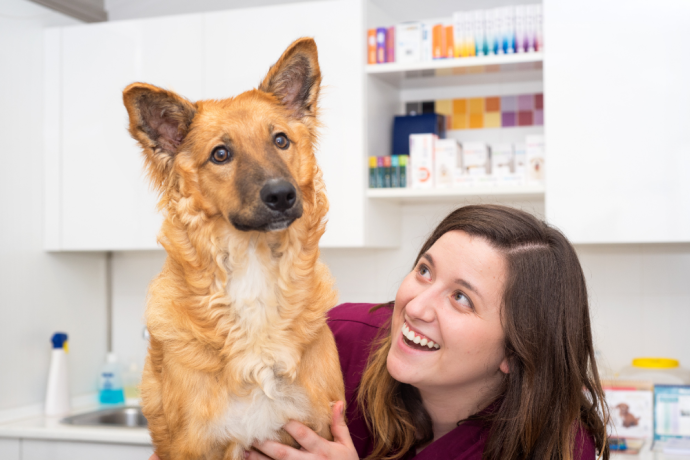 Dog Veterinary Tips Stem Cell Therapy for Dogs: Conditions Treated, Efficacy, and Cost
Dog Veterinary Tips Stem Cell Therapy for Dogs: Conditions Treated, Efficacy, and Cost - 871
- 0
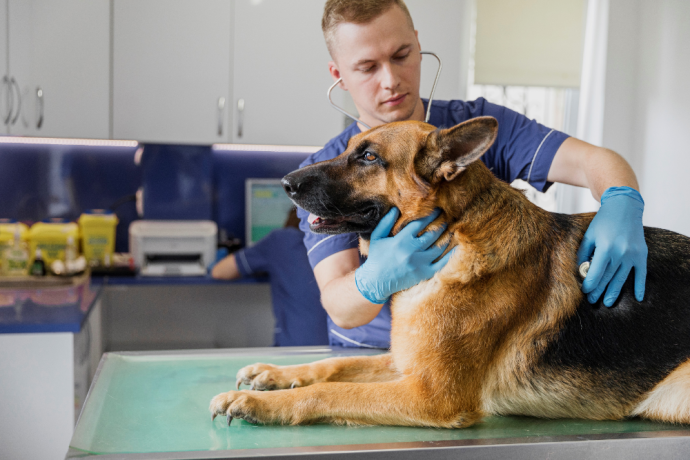 Dog Veterinary Tips Dog Neutering: Pros and Cons of Neutering a Male Dog (Vet Advice)
Dog Veterinary Tips Dog Neutering: Pros and Cons of Neutering a Male Dog (Vet Advice) - 7972
- 9
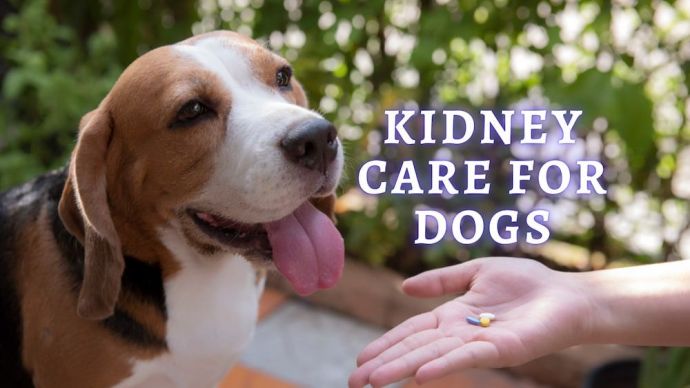 Dog Veterinary Tips Kidney Care for Dogs: How to Improve Kidney Function in Dogs? (Vet Advice)
Dog Veterinary Tips Kidney Care for Dogs: How to Improve Kidney Function in Dogs? (Vet Advice) - 731
- 0
 Dog Veterinary Tips Why is my Dog throwing up: Causes and Preventing (Veterinary Advice)
Dog Veterinary Tips Why is my Dog throwing up: Causes and Preventing (Veterinary Advice) - 21800
- 5
 Dog Care My Dog Keeps Scratching His Mouth: Reasons Why Your Dog Scratching Face
Dog Care My Dog Keeps Scratching His Mouth: Reasons Why Your Dog Scratching Face - 17168
- 1
 Dog Care Why Is My Dog Bleeding From Its Butt? Causes and treatment of rectal bleeding in the dog
Dog Care Why Is My Dog Bleeding From Its Butt? Causes and treatment of rectal bleeding in the dog - 15114
- 0









